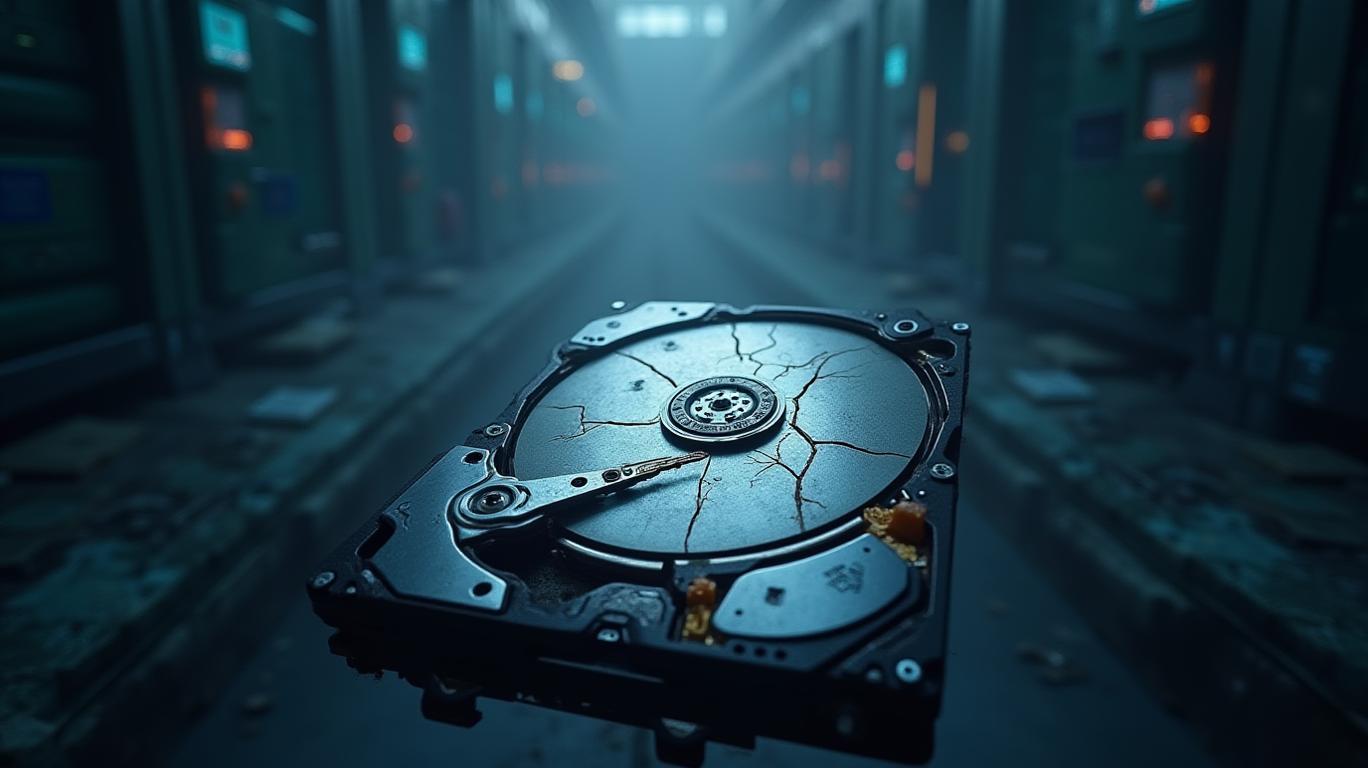The Write-Off: Why Western Digital’s Future is Facing an Imminent Crash in a Data Storage Revolution

The data storage industry is undergoing a seismic shift, and Western Digital (WDC) finds itself trapped in the eye of the storm. A confluence of overcapacity in its core hard disk drive (HDD) business, accelerating demand for rival solid-state drives (SSDs), and a suffocating debt burden are creating a perfect storm of risks. Investors should take heed: this is no longer a company positioned to weather the coming reckoning.
The HDD Overcapacity Crisis: Margins Are Collapsing
Western Digital’s HDD division, once a cash cow, is now drowning in excess supply. Recent data reveals total HDD shipments fell 9.5% sequentially in Q1 2025, with revenue dropping 8.4% to $5.2 billion. Worse still, nearline HDDs—the segment critical to data centers—slumped 12% in shipments, even as average selling prices (ASPs) hit record highs. This paradox underscores a grim reality: WDC is hiking prices to offset falling volumes, a last-ditch effort to prop up margins in an oversupplied market.
The problem? Demand is normalizing after pandemic-driven spikes, and hyperscalers are pausing purchases to digest inventory. Meanwhile, WDC’s gross margin for HDDs, though up to 35.9% in Q2 2025, relies on unsustainable pricing. The company’s CFO, Wissam Jabre, admitted as much, warning of mid-single-digit sequential declines in HDD revenue for Q3.
The SSD Tsunami: A Structural Threat to HDD Dominance
Western Digital’s core business is being overtaken by SSDs, which now offer 54x faster read speeds, 79.5% better power efficiency, and 22.8x higher storage density per rack. Hyperscalers are pivoting aggressively: Pure Storage’s deal to replace HDDs with all-flash systems at a top-four cloud provider signals a strategic realignment.
The numbers are damning:
- SSDs like Micron’s 122TB PCIe Gen5 drives are cost-competitive for bulk storage within two years, per industry analysts.
- HDDs’ 6:1 cost-per-TB advantage is eroding as SSDs leverage economies of scale.
WDC’s response? Bets on next-gen HDD tech like SMR and HAMR, but these face qualification delays. Even if adopted, they’ll battle SSDs’ TCO superiority—a fight WDC can’t win.
Debt and Declining Cash Flow: A Financial Time Bomb
Western Digital’s balance sheet is a liability. As of Q2 2025, its total debt stood at $7.2 billion, with a debt-to-equity ratio of 1.08—meaning liabilities exceed equity. While cash reserves hit $2.29 billion, this is insufficient to navigate a prolonged downturn.
The semiconductor cycle is also turning. WDC’s Flash division, already losing ground to SSDs, faces pricing wars that compressed margins to 15.5% a year ago. With NAND oversupply persisting, this division is a drag, not a lifeline.
The Write-Off Looms: Why This Is a Sell Now
Western Digital is a company with no clear path forward:
1. Overcapacity in HDDs will force price cuts, not price hikes, once inventories rebalance.
2. SSDs are displacing HDDs in the cloud, WDC’s largest market (55% of revenue).
3. High debt leaves no room for error in a slowing tech cycle.
The writing is on the wall. Investors should exit now.
Conclusion: The HDD Era is Ending—Sell Before the Crash
Western Digital’s risks are compounding, and the market is starting to price this in. A sell recommendation is urgent as the company faces:
- A $7.2 billion debt wall in a weakening semiconductor environment.
- Structural declines in HDD demand as SSDs dominate.
- Margin pressures with no clear path to profitability in its legacy business.
This is not a cyclical dip—it’s a secular decline. Investors holding WDC should take profits now before the HDD sunset becomes irreversible.
Andrew Ross Sorkin-style analysis: A blend of data-driven urgency and strategic clarity, framed to demand immediate action.

Comments
No comments yet